All images are Courtesy NASA/JPL-Caltech, and are generated by JPL’s Solar System Simulator. I believe the use of these images is permitted per JPL’s copyright policy.
The viewpoint of the simulator has been set as earth, meaning this series of images are geocentric.


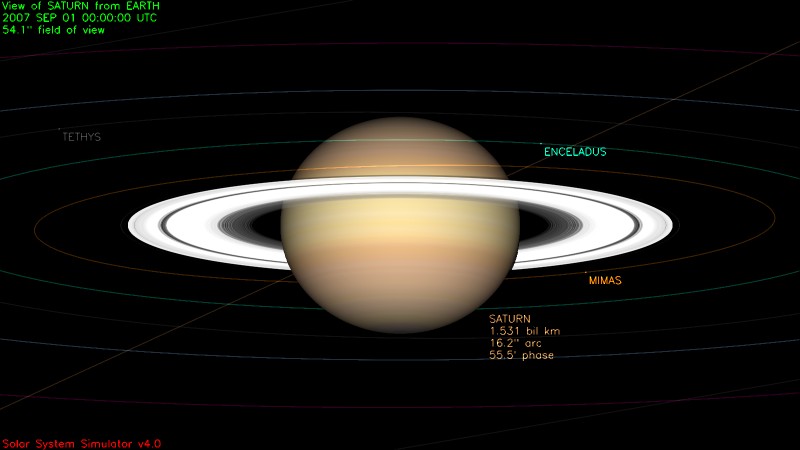
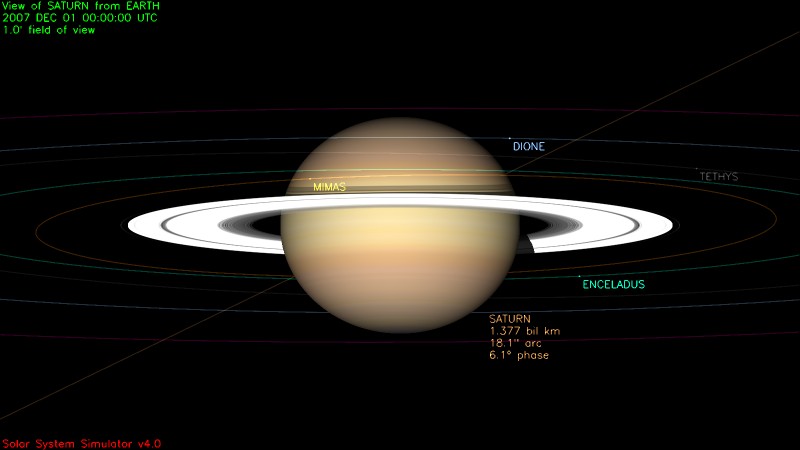
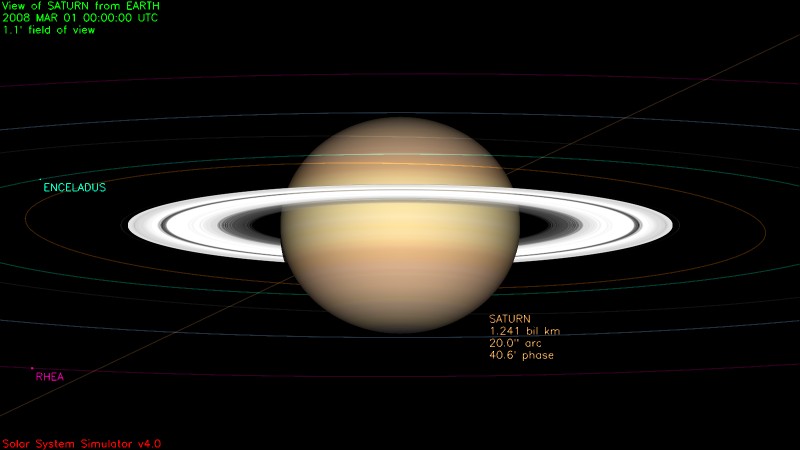
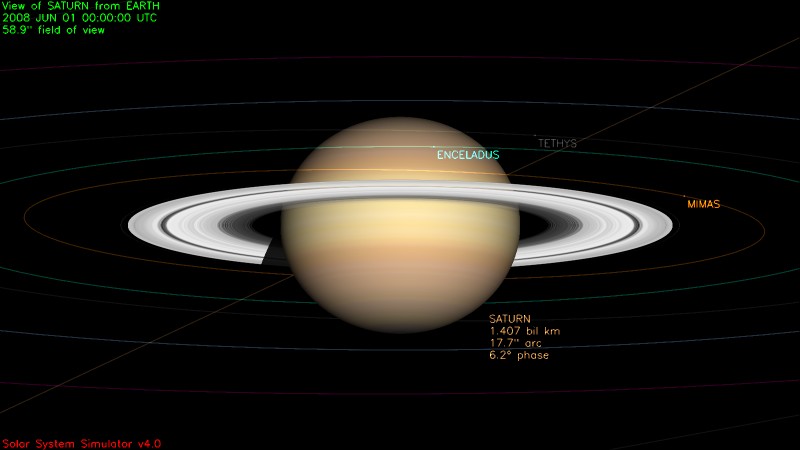
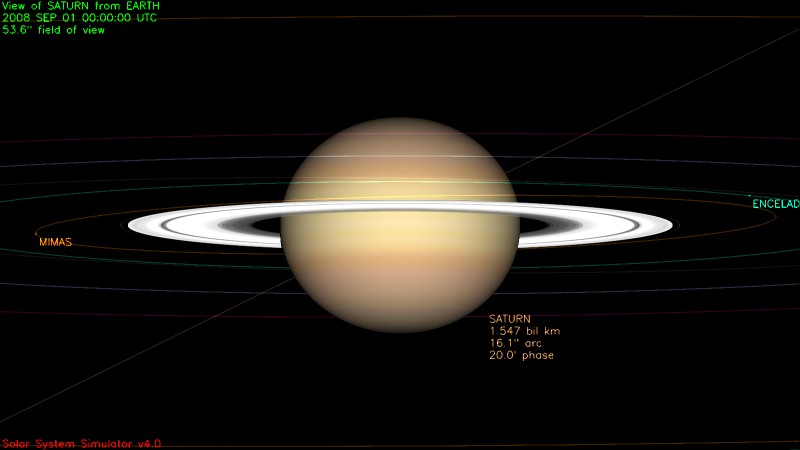
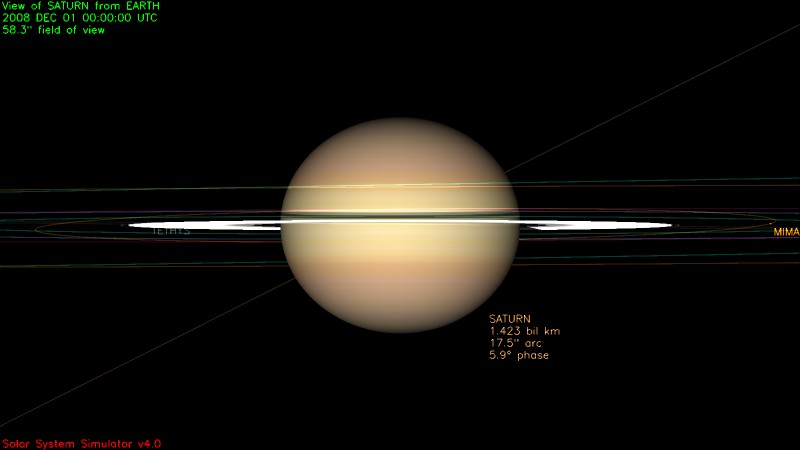
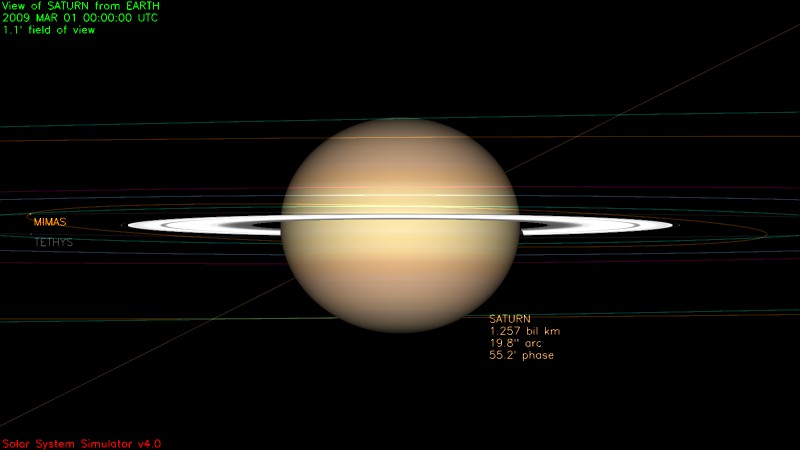
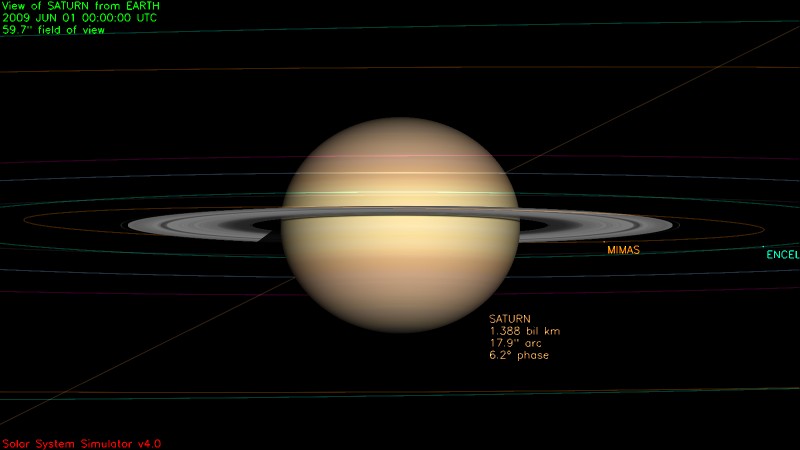
This next one interests me the most:

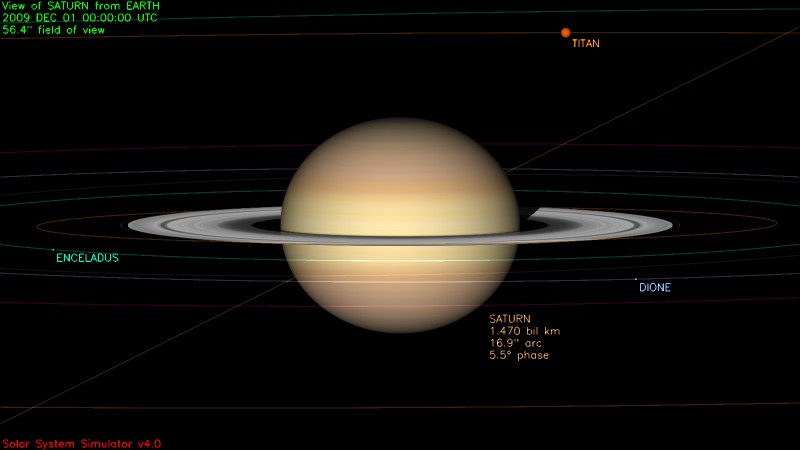
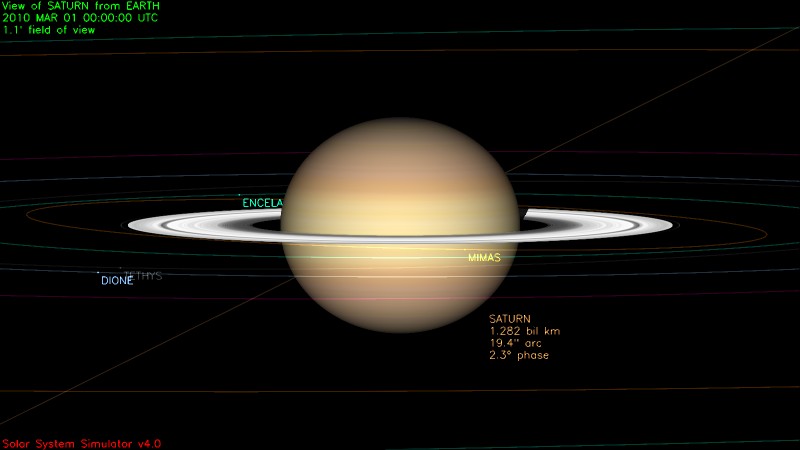
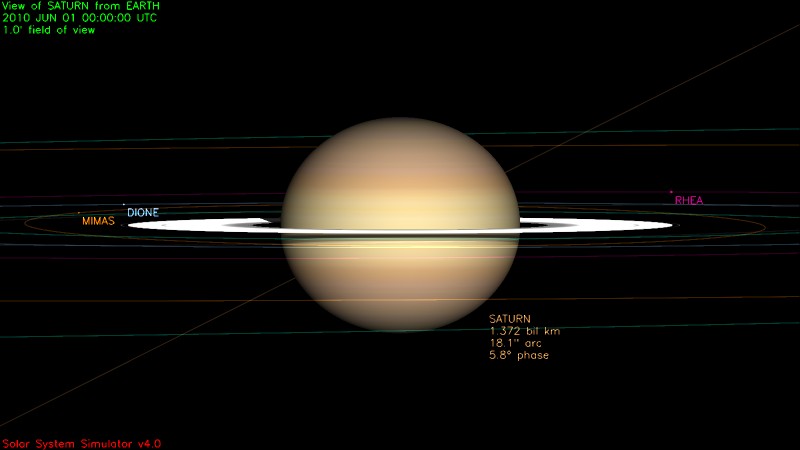
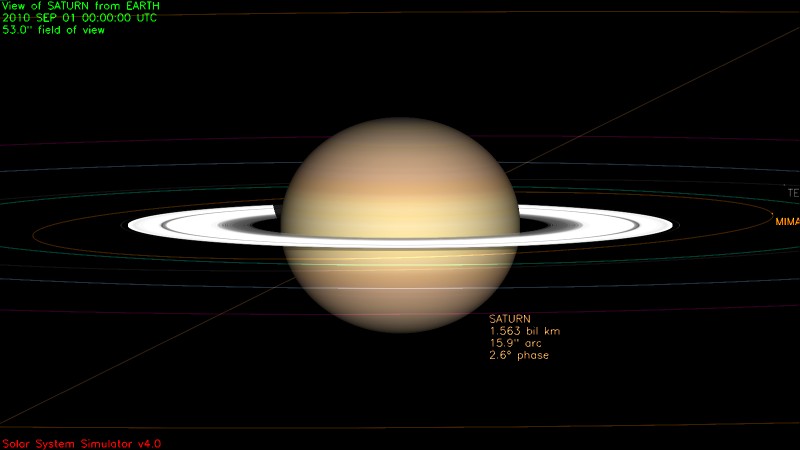

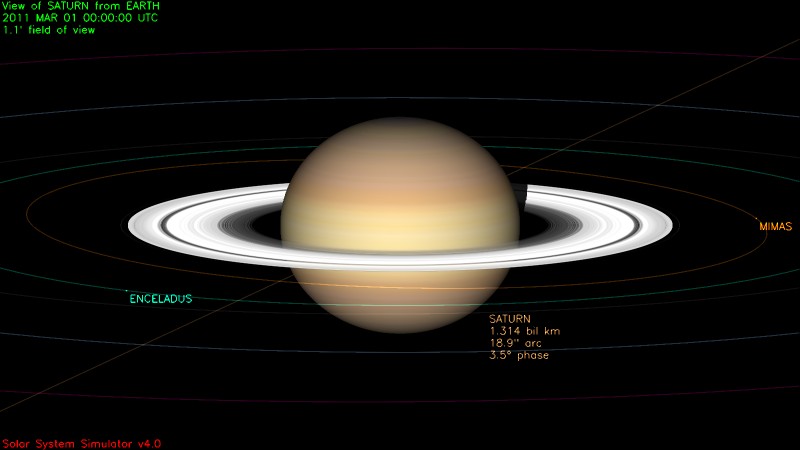
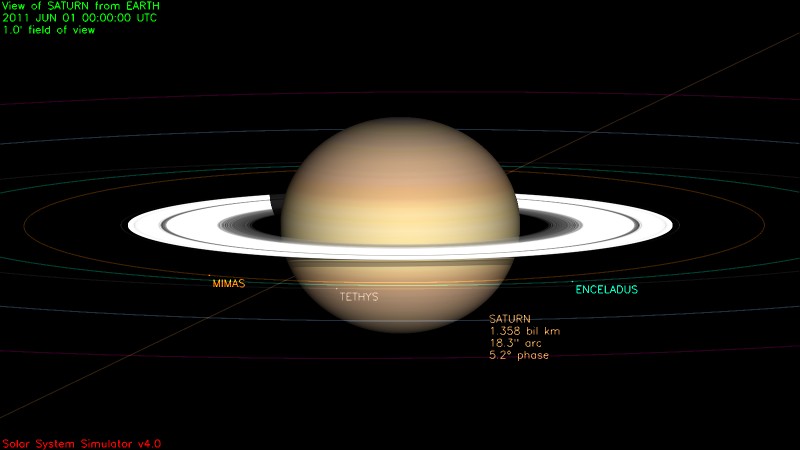
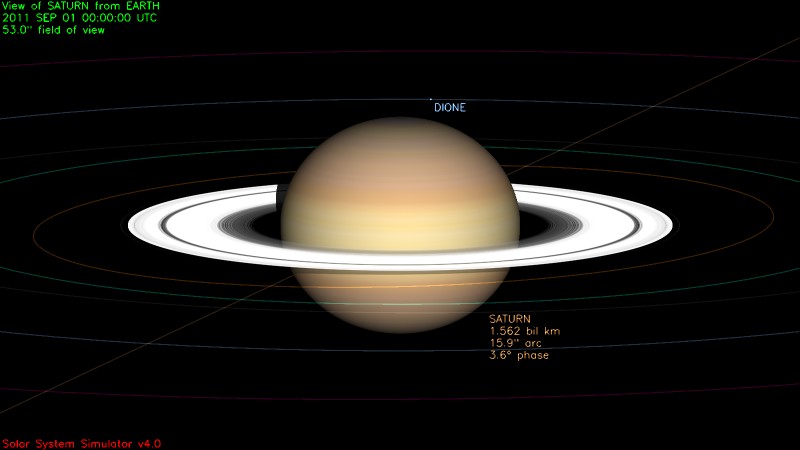
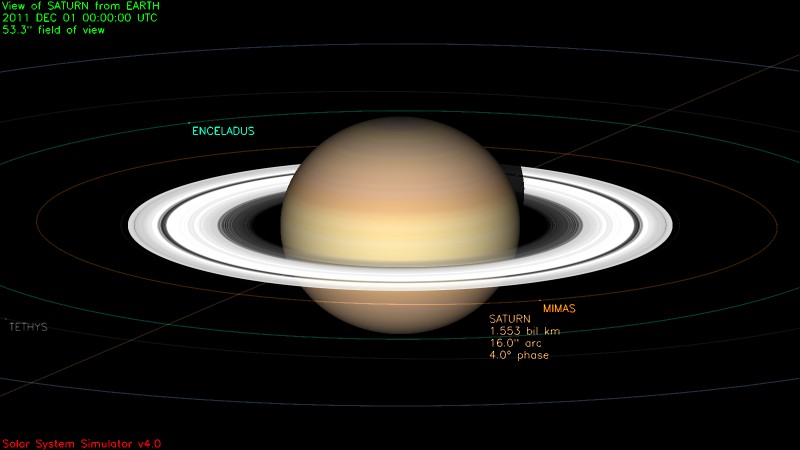
I marked the one above where the rings align with earth. I spent some time studying a number of books about Western astrology some years ago, but I’ve never read of anything that places importance on the day when earth intersects with a plane that represents an imaginary extension of Saturn’s rings.
The date that appears to correlate with the coming alignment, September 1, 2009, puts Saturn at 22Virgo55 when using a tropical zodiac; when using sidereal, 28Leo02. However, there’s a window of about +/- 2 days where Saturn’s rings similarly appear to disappear, and since I’ve judged the date of 9/1/2007 visually, the precise zodiacal degree mentioned has a little variance.
In viewing the series of images, the rings appear to oscillate up then down. This is most apparent in the image of 2008.12.01, where Saturn’s rings almost disappear, but then the next image’s leading edge of the rings appear to move back ‘upward’ for a period of time. I believe that is likely due to the earth’s orbit around the sun, the periodicity of the oscillation appears to be based upon an earth year. I’ve been meaning to run a set with the sun as the viewpoint, but this post has been sitting here in the blog for some time, and I just don’t have much time right now. Maybe later.
Interesting topic; I have a pic I took of Saturn in 2003 with the rings tipped so steep they peeked above the planet. In 2009 they are flat. Cool to see the solar system at work.
http://www.flickr.com/photos/stevel3o7/3259871026/in/set-72157613215331610/
ps; I am sure you meant to name this blog astrology versus astronomy, I am curious as to why?
I came to your site searching for a cieling fan capacitor (a post solved my problem) and then spent some time poking around. Nice site!
I’m not sure what your question is specifically referring to. Oh, I reread the post, I see. You believe the post is mis-titled?.
Saturn is reasonably large and amazingly clear in your photo. Much better than the naked eye!
If you play around with the JPL Simulator (is it still online?), you can also find the times when the rings are tipped to maximum. I didn’t want to include a full cycle, simply because of the large number of photos it would have entailed, because I seem to recall wanting the interval between all of them of equal time periods, and quarterly intervals showed the interval resolution I wanted near the alignment.
You’re probably right, your suggestion probably is a better title. There are times when I don’t want to attract particular types of attention, such as inflaming the astrology versus astronomy schism, but which may be a pseudo schism. I do find it curious that astrologers, at least western ones, haven’t paid more attention to this type of phenomenon.
The alignment’s plane passes through the earth within these next few days, about a week I guess. On several occasions I’ve thought of printing the astrology chart here, and over time interpreting it, but lately baking bread has been my free-time compulsion.
While it’s hard to for me to say what my rationale for the title was back when I wrote the post (I don’t specifically recall), it’s possible I wanted the ideas of “saturn” and “alignment” impressed for some reason, perhaps subconsciously relating to synastry, or even harmonics (such as John Addey’s implementation), as types of alignments, though of a different geometric kind versus this ring-plane alignment. Undoubtedly, “astrology versus astronomy” would have been of more generalized interest, and would be sure to attract a wide polarization of views, which perhaps I wanted to avoid.